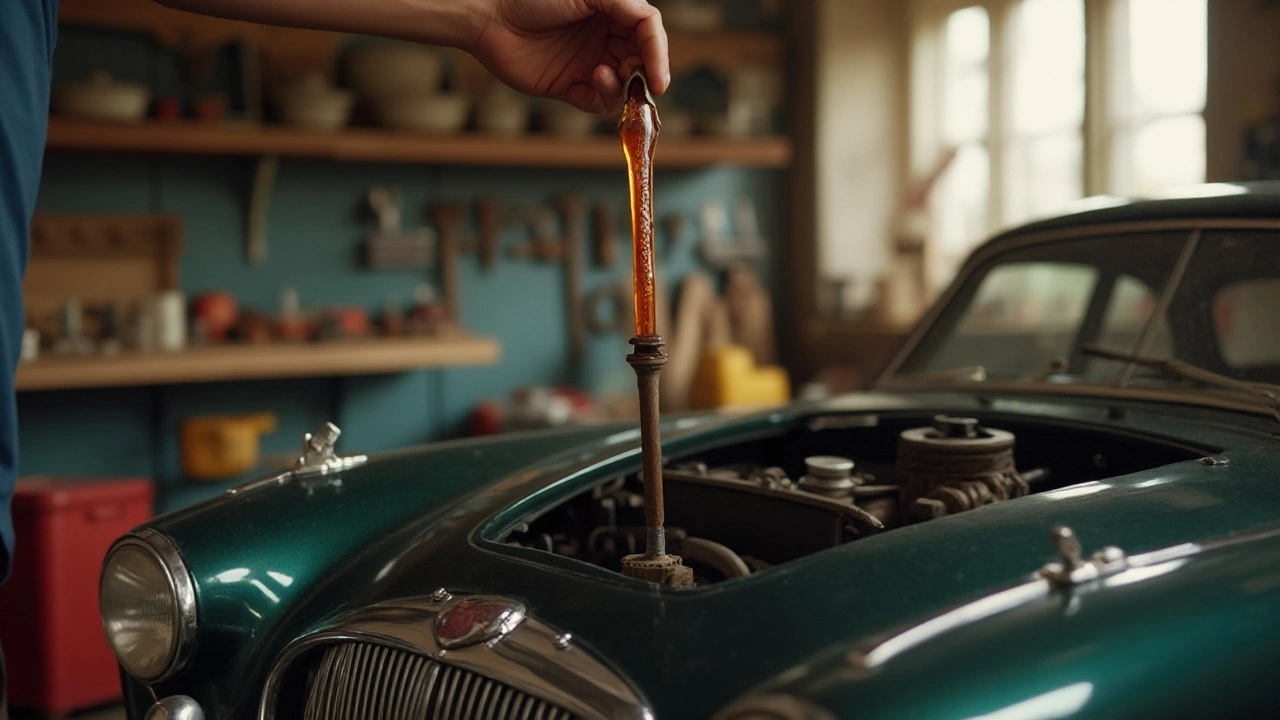Engine Oil Color – What It Says About Your Engine
When you glance at engine oil color, the hue of the oil inside your motor. Also known as oil hue, it acts like a quick health check for the whole lubrication system. A clear, amber shade usually means the oil is still doing its job, while dark, gritty tones can signal contamination, overheating, or neglect. By learning to read this simple visual cue, you can catch problems before they wreck the engine.
Why Oil Color Matters and What It Connects To
Engine oil isn’t just a liquid; it’s a complex mix that carries heat, cleans metal surfaces, and prevents wear. Engine oil, the lubricating fluid that circulates through your engine’s moving parts changes color as it picks up particles, moisture, and combustion by‑products. That shift is what oil analysis studies – a lab test that measures viscosity, metal content, and acidity to pinpoint wear trends. Oil level, the amount of oil measured on the dipstick works hand‑in‑hand with color; a low level often speeds up oxidation, turning the oil black faster. Together, these factors influence engine wear and dictate when you need an oil change. In short, engine oil color encompasses oil condition, oil analysis informs maintenance decisions, and oil level affects wear rates. Ignoring any one of these can lead to sludge buildup, bearing failure, or costly repairs.
So, what should you actually look for? Fresh oil typically appears golden‑amber and runs clear. A light brown tint usually means it’s been in use for a few thousand miles – still fine if the level is correct. Dark brown or black oil often indicates heavy oxidation or contaminants; a gritty feel on the dipstick confirms metal particles. If you spot a milky froth, moisture has entered the system – a sign of a blown head gasket. When any of these warning colors appear, the safest move is to schedule an oil change, check the oil filter, and consider a full oil analysis to catch hidden wear. Armed with this knowledge, you’ll know exactly when to act, keeping your engine running smooth and avoiding surprise breakdowns.
Below you’ll find a curated list of articles that dive deeper into oil‑related topics – from spotting bad oil to understanding the cost of skipping oil changes, the impact of over‑filling, and how oil color ties into overall vehicle health. Explore the posts to get practical tips, real‑world examples, and step‑by‑step guides that help you stay ahead of engine trouble.

Understanding the Ideal Color of Engine Oil on a Dipstick
Jan 14 2025 / Car MaintenanceChecking the oil color on a dipstick is a crucial part of vehicle maintenance, with the hue offering insights into the engine health. Fresh oil usually appears amber, while dark or cloudy oil might signal potential issues. Regularly checking and understanding these variations helps in maintaining engine performance and longevity. Knowing the appropriate oil color can prevent costly repairs and prolong the life of your vehicle's engine.
VIEW MORE